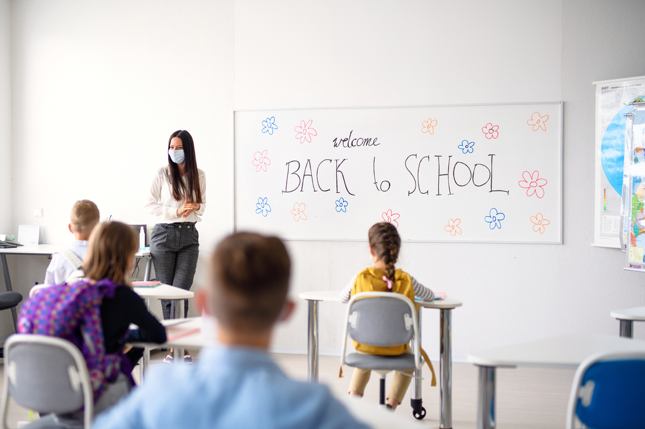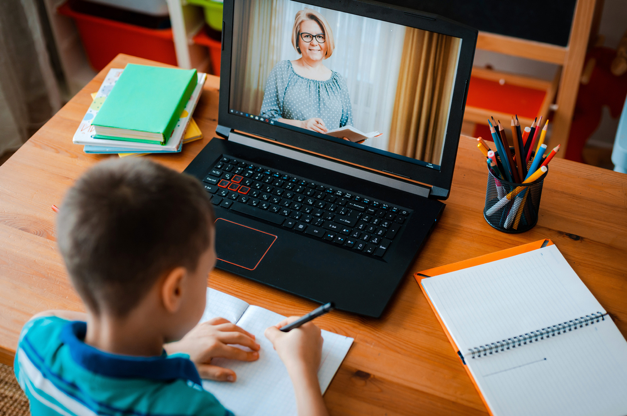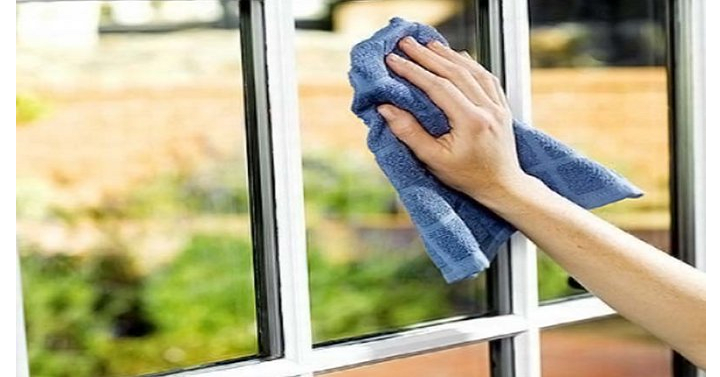The COVID-19 pandemic has affected our lives in profound ways. Since sweeping the planet in the early months of 2020, it has changed everything – from how we interact with our loved ones to how we work. One area that has been especially hard hit, however, is education. In March of 2020, most schools throughout the United States closed their doors in an effort to slow the spread. From pre-K centers to universities, no educational center was immune.

Source: Halfpoint/Shutterstock.com
While many districts have opened and resumed in-person instruction (or plan to do so soon), the effects of COVID will linger for years to come. Even once a vaccine becomes widely available to the American public, schools and universities are unlikely to ever fully go back to “normal.” With some experts predicting COVID-19 will ultimately change us as a species, it should come as no surprise we will be feeling its impacts for at least the next decade. From scrubs for men and women being worn by teachers to increased use of remote learning, several changes will be taking place in schools over the next several years.
Changes to Dress Codes for Teachers
Over the last several months, many school districts have updated their dress codes to allow or encourage faculty members to wear scrubs. Unlike many other garments, scrubs are designed to be washed using hot water and dried at high temperatures to destroy harmful viruses, bacteria and other particles. They are also often manufactured using antimicrobial fabrics less likely to transfer germs than other materials. As such, they can be safer and easier to sanitize than other clothing.
Many schools and universities will likely continue to allow (or even require) teachers and professors to wear scrubs instead of their usual attire. They may also ask faculty members to change into their scrubs upon arriving at work and changing back into their regular clothes before leaving at the end of the day to further protect students and prevent community spread.
Today’s stylish scrubs for women and men are a far cry from the pajama-like ones of the past. They come in several colors and patterns, and many styles are tailored for a more professional appearance. While it may seem unusual to see a teacher wearing scrubs rather than business casual attire, it is likely something that will become increasingly common in schools.
Increased Use of Remote Learning

Source: Juliya Shangarey/Shutterstock.com
When schools were first forced to close their doors, administrators across the country scrambled to implement tools enabling students to continue learning from home. Some went the traditional correspondence school route, with assignments being sent to students and returned to their teachers via the mail or picked up from and dropped off at schools. Others have embraced online conferencing platforms to allow students and teachers to interact face-to-face (through screens) from home. And others are using hybrid methods of instruction to keep kids on track with their education.
Even after a vaccine becomes widely available, many students will likely continue their education via remote learning. Some parents will choose this option for their children as a means of protecting them from the virus. Others will keep their kids enrolled in online learning because it fits their schedules better, it is more convenient or it solves another problem. While remote education isn’t right for everyone, it has simply proven to be the best option for some families – and those families are likely to continue using it.
In addition, social distancing and other precautions will likely remain necessary for several years to come. As a result, many schools will implement programs during which some students attend school on certain days while others learn from home on those days. By switching back and forth between in-person and at-home learning, schools will be better able to maintain smaller classrooms and keep students physically distant while still enabling them to experience the benefits of being in school. These programs are expected to remain in place long-term in many areas and will ensure remote learning becomes an integral component of the American education system.
Continued High Demand for School Nurses

Source: Mix and Match Studio/Shutterstock.com
School nurses are unsung heroes of the COVID-19 pandemic. They play an instrumental role in keeping schools safe and protecting students and faculty members. They also spearhead initiatives to educate and protect the community.
Long after a vaccine has been available to the general public, school nurses will remain in high demand. They will work to keep students learning both in school and at home safe and ensure members of the community remain educated on the latest COVID developments. A vaccine will make the world a safer place, but school nurses will remain on the frontlines of protecting students, faculty and even parents.
For those who are considering nursing, becoming a school nurse could be very rewarding in the coming years. There are some important things to know before becoming a school nurse, though.
The Bottom Line
While a widely available vaccine is the first step toward a return to normalcy, COVID will likely continue to affect our lives for many, many years to come. This is especially true in schools and universities where administrators will need to continue taking precautions to ensure the safety of students and staff. In many ways, things may never fully return to how they were before the pandemic. Instead, many of the changes and regulations that have been implemented over the past several months are likely to remain and form a “new normal.”
Much like residents of New Orleans describe their lives in terms of pre-Katrina and post-Katrina, “normal” for schools and universities will likely be defined in terms of pre-COVID and post-COVID. When it comes to COVID-19’s current status and future perspectives, only one thing is certain: Our world and lives may never quite look like they did before March of 2020 again.






